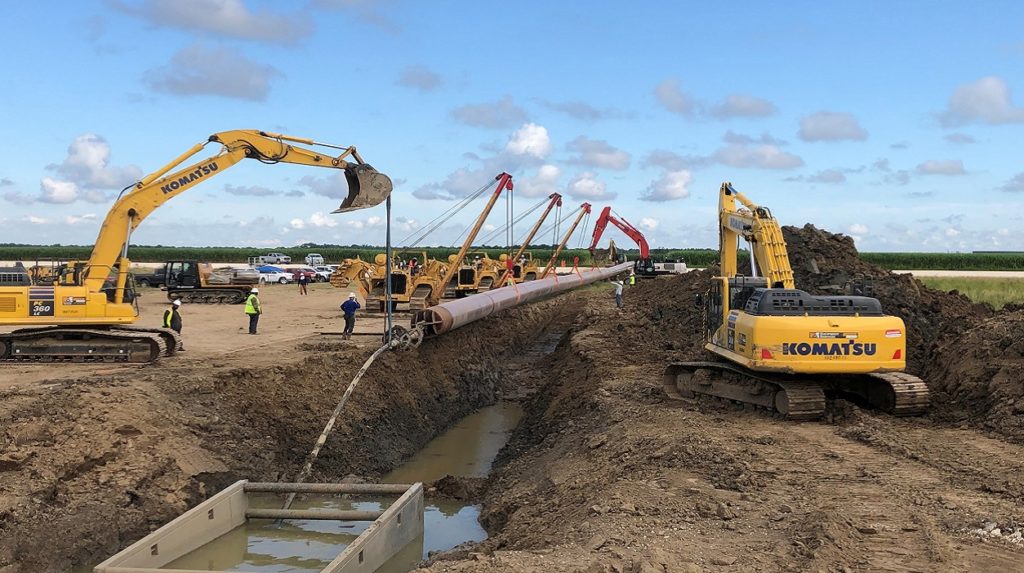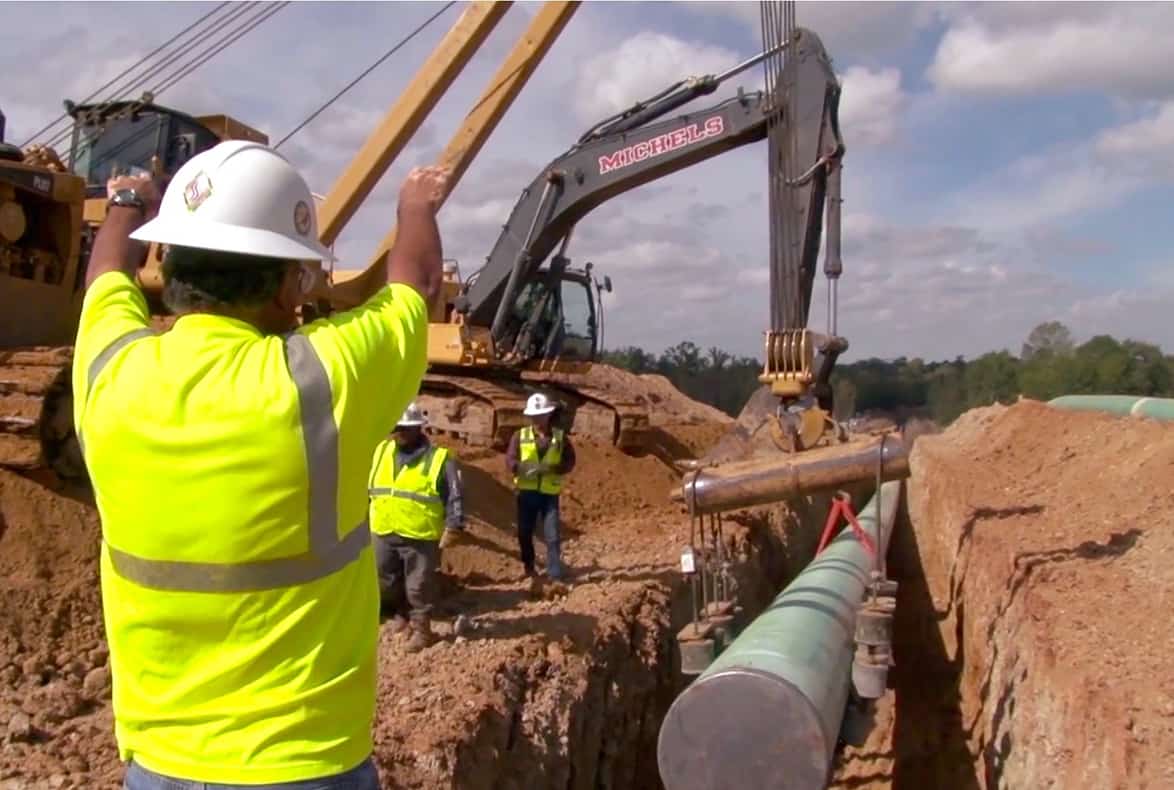How to Maintain Long-Term Performance With Creek Pipe HDPE installation
A Deep Dive Into Pipes Installation: Vital Elements and Factors To Consider for Effective Projects
Efficient pipe installation is an essential aspect of design projects. It involves a series of variables, from product choice to precise sizing and layout. Each choice can significantly affect the system's efficiency and longevity. Comprehending these parts is crucial for staying clear of expensive mistakes. Creek Pipe HDPE installation. As groups browse through the complexities of installation, several key considerations arise that warrant interest. What are the crucial aspects that can make or break a piping project?
Recognizing Pipe Materials and Their Applications
When choosing pipe materials, one have to think about the certain applications and environmental problems they will deal with. Different materials supply distinct residential properties that accommodate various needs. As an example, PVC is lightweight and immune to corrosion, making it suitable for water distribution systems. On the other hand, steel pipelines offer toughness and resilience, ideal for high-pressure applications however might call for safety coatings to prevent rust.Copper pipes are favored for plumbing as a result of their antimicrobial residential properties and ease of installation, while polyethylene is frequently used in below ground applications as a result of its adaptability and resistance to cracking.The choice of product also depends upon temperature level extremes, chemical exposure, and installation place. For high-temperature applications, materials like CPVC or PEX can be helpful. Inevitably, comprehending the features and limitations of each material help in making informed decisions that improve system effectiveness and long life.
Relevance of Correct Sizing and Design
Proper sizing and style of pipelines are vital for making certain ideal flow rates and minimizing pressure loss. These elements additionally play a significant role in identifying the compatibility of materials used in the installation. A systematic method to sizing and design can significantly improve the effectiveness and durability of a piping system.
Influence On Flow Rates
Flow prices in piping systems are critically influenced by the sizing and style of the pipelines. Properly sized pipes assure that the liquid can relocate effectively, reducing turbulence and maximizing flow capability. Extra-large pipes can result in reduced circulation speeds, while undersized pipelines may limit circulation, leading to increased rubbing and possible obstructions. The design has to likewise consider variables such as pipe material, inner surface level of smoothness, and design, as these add to the overall performance of fluid transport. Furthermore, the arrangement of installations and connections within the system can influence flow rates. Consequently, precise interest to pipe sizing and layout is necessary for maximizing circulation efficiency in any piping installation job.
Stress Loss Considerations

How can push loss greatly influence the efficiency of a piping system? Pressure loss is a critical element that can substantially diminish the performance of liquid transportation systems. When pipes are incorrectly sized or created, too much pressure loss may take place, leading to reduced flow prices and raised power consumption. This inefficiency can lead to higher functional prices and possible system failings. Correct sizing and design are important to decrease stress loss, ensuring that liquid characteristics continue to be ideal throughout the system. Engineers need to very carefully take into consideration variables such as pipe size, length, and material to accomplish an efficient balance. Ultimately, dealing with pressure loss during the design stage can enhance reliability and long life, making it essential for effective piping tasks.
Material Compatibility Aspects
Pressure loss is not the only aspect that can influence the efficiency of a piping system; material compatibility also plays a substantial duty in general effectiveness. Guaranteeing that the materials made use of in a piping system work with the liquids they will transport is important. Various products can react adversely to numerous chemicals, resulting in corrosion, destruction, or contamination. This can eventually compromise the integrity of the system and impact its longevity. Additionally, appropriate sizing and design are important to suit thermal expansion and tightening, which can additionally influence product performance. Reviewing factors such as temperature, stress, and chemical composition is important in picking appropriate materials, thereby enhancing system integrity and reducing maintenance prices in the lengthy term.
Techniques for Accurate Pipe Installation
Accurate pipe installation is vital for assuring system performance and durability. Numerous strategies can improve the precision of this procedure. Initially, cautious dimension is vital; installers should make use of high quality tools such as laser levels and measuring tape to figure out the exact lengths and angles needed. Next, proper pipe cutting strategies, like using a pipeline cutter as opposed to a hacksaw, guarantee tidy sides that promote far better links. Furthermore, making use of alignment tools, such as pipe jigs, can especially improve precision during setting up. It is additionally recommended to think about thermal growth; permitting appropriate spacing and growth joints can avoid future misalignments. Ultimately, the installation group must follow producer guidelines to follow particular recommendations related to each pipe kind. By applying these methods, the possibility of leakages and system failings decreases, inevitably adding to a more reputable piping system.
Making Certain Pipe Alignment and Assistance
Appropriate placement and assistance are essential to the honesty and performance of any kind of piping system. Misalignment can bring about raised tension on joints, potential leaks, and lowered effectiveness. To guarantee appropriate positioning, it is important to make use of suitable devices such as laser levels and positioning determines. These instruments assist achieve specific positioning, assuring that pipelines are set up based on layout specifications.Support systems need to be made to suit thermal development and tightening, in addition to the weight of the pipelines and their contents. Picking the ideal sort of assistances, hangers, and braces is important. Each should be set up at defined intervals to stop drooping or unnecessary anxiety on the pipes. Normal examinations adhering to installation can aid recognize any misalignments or indicators of insufficient support. By prioritizing placement and support, one can significantly improve the longevity and functionality of the piping system.
Typical Installation Mistakes to Stay Clear Of

Testing and Inspection for Quality Assurance
Although the installation process might appear complete, comprehensive screening and examination are essential to ensuring the lasting integrity of a piping system. Various approaches are employed to examine the integrity of the installation, consisting of pressure tests, visual evaluations, and non-destructive screening (NDT) techniques. Stress tests validate that the system can endure functional problems without leaks, while aesthetic evaluations aid recognize any kind of visible issues in the pipelines or joints. NDT techniques, such as ultrasonic or radiographic screening, supply understandings right into the material stability without endangering the system.Additionally, recording the screening results is essential for future reference and compliance with industry standards. This documentation offers not only as a quality control measure yet likewise as a legal protect. Inevitably, a detailed screening and evaluation method adds to the general safety and security and efficiency of the piping system, guaranteeing it fulfills the necessary efficiency criteria over time.
Maintenance Tips for Lasting Pipe Solutions
Preserving a pipe system needs routine assessments and keeping track of to recognize possible concerns prior to they rise. Applying reliable cleansing methods is also important for avoiding accumulation that can impede performance. Together, these practices add to the long life and integrity of the piping framework.
Routine Assessments and Tracking
Routine assessments and tracking are vital for guaranteeing the longevity and performance of pipe systems. Routine evaluations can help recognize prospective issues such as leaks, deterioration, or obstructions prior to they rise into significant problems. Applying a timetable for regular evaluations enables for the early detection of damage, making it possible for prompt repair work. Monitoring stress levels and flow prices can likewise offer important understandings right into system performance, ensuring that any kind of anomalies are resolved immediately. Additionally, the usage of advanced modern technologies, such as infrared video cameras or ultrasonic screening, can enhance the examination process by supplying comprehensive details about pipe conditions. Ultimately, regular monitoring and assessments contribute to the dependability and durability of pipe systems, minimizing the threat of costly repair services and downtime.

Reliable Cleaning Up Strategies
Efficient cleaning strategies are necessary for keeping the integrity and capability of pipe systems. On a regular basis scheduled maintenance, such as flushing systems with water, assists get rid of debris and buildup. For even more persistent blockages, specialists frequently suggest hydro jetting, which makes use of high-pressure water to clean pipe insides thoroughly. Chemical cleaners can additionally be utilized but must be picked thoroughly to prevent damaging pipes. Furthermore, employing devices like pipe cameras trenchless plumbing can help in identifying issue areas and making sure effective cleaning. Keeping proper drain and preventing the disposal of harmful compounds down pipelines better add to long life. Generally, regular cleaning methods not only improve efficiency but also reduce the risk of costly repairs in the future.
Frequently Asked Questions
What Are the Labor Costs Connected With Pipe Installation Projects?
Labor costs for pipe installation tasks differ widely, affected by aspects like project complexity, regional wage prices, and needed abilities (Creek Pipe HDPE installation). Commonly, these expenses can range from $50 to $100 per hour, depending on the workforce entailed
Just How Do Regional Regulations Affect Pipe Installation Practices?
Local laws substantially affect pipe installation practices by developing safety and security criteria, product specs, and installation methods. Conformity with these guidelines guarantees job safety, ecological security, and adherence to local codes, ultimately influencing general task success and expenses.
What Tools Are Essential for Pipe Installation?
Crucial tools for pipe installation consist of pipe wrenches, cutters, and installations. In addition, sealers, determining tapes, and levels assure accuracy and sturdiness. Appropriate devices promotes performance and i thought about this adherence to security standards throughout the installation process.
How Can Weather Issues Influence the Installation Process?
Weather significantly impact the installation procedure, as extreme temperature levels, rain, or wind can influence product honesty, worker safety and security, and task timelines. Proper planning and organizing are vital to reduce these possible challenges during installation.
Are There Guarantees for Mounted Pipe Systems?
Guarantees for mounted pipe systems frequently vary by maker and installation contractor. Usually, they cover issues and handiwork for a specified period, making sure the system's integrity and giving assurance to the property owner.